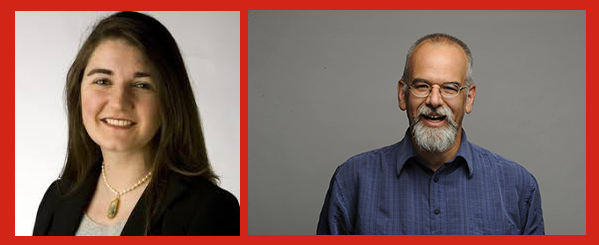
Religion is a topic of conversation many choose to avoid, especially when talking with people they don’t know.
Religion reporters, however, must do just the opposite.
As they dive into different cultures and broach highly sensitive subjects with complete strangers, they face a number of unique ethical challenges.
The primary goal of religion reporting, says Manya Brachear Pashman, who’s been the Chicago Tribune’s religion reporter for 15 years, “is to teach people about religions they may not be exposed to.”
To do that within an ethical framework, journalists must keep a few things in mind.
“The big one, of course, is being able to put your own religious beliefs aside in order to cover other religions, to keep an open mind and not let your own beliefs get in the way or influence what you’re writing about,” Brachear Pashman says. “We’re professionals for a reason, [so] we set aside our own personal beliefs to cover things objectively.”
Being a religious person may confer some advantages in religion reporting, whether journalists are covering their own religion or someone else’s. “Religious people do things that are hard to explain sometimes, but if you’re religious yourself, you just have a little bit more of a grasp of why,” she adds.
Another challenge is that the subjectivity of religion may require a reporter to talk to more sources than usual to understand a particular tradition or event.
“If you want to know what a particular ritual means, you better ask more than one person … it can be a very personal, very personal thing, so you want to be sure to talk to multiple clergy, multiple teachers, multiple practitioners and believers of the faith,” says Brachear Pashman, who is also the current president of the Religion News Association. “Understand going in that religion is not homogenous. No religious tradition is homogeneous homogeneous — there’s a spectrum of belief in every tradition.”
And, she adds, reporters must be there for major events. “Being present for those ritual moments is very important. I always advise writers to include a ritual moment or a teaching moment in every story because that brands the story. It tells the reader, ‘This is a religion story; this is what’s going on here for these people.’ That’s an important signal to send to readers,” she says.
Emphasizing that it’s difficult to report religion stories by telephone, Brachear Pashman says, “We’re not talking about casting a vote at the ballot box or going to a town hall meeting. We’re talking about a transcendent moment for these people. That scene is packed with meaning.”
Access to information is also a unique challenge, says Bob Smietana, who has covered religion for secular and religious media outlets since 1999 and is currently a senior writer with Facts & Trends, a quarterly Christian magazine.
“If I’m covering city council or a school system, everything is public record. But religious groups in general, don’t have to make anything public,” he explains. “So you have to have a respectful relationship with them and that they trust you, because everything you get is voluntary.”
Smietana, who is a former Religion News Association president, also warns about taking things like scripture verses literally. Instead, he says, ask sources to explain them in common, contemporary language. “When they’re talking to an insider audience [of believers], they all know what they mean, so ask them what they mean. Otherwise, you can misinterpret things,” he says. “You want to get people to explain their beliefs — and even their titles, whether it’s minister or pastor or elder or preacher — in their own words.”
Reporters must also keep things relative. As one example, Smietana points to the time he covered a group of cat worshippers. “Worshipping cats may sound weird at first but then, just think about some of the stories in the Bible — God talking to a burning bush, walking on water, etc. — those things sound weird too, if you’re an outsider,” he says.
A great place to start, Smietana advises, is with consideration, empathy and a simple question: “How did these people begin believing these things and what do they mean by them?”
One final challenge to keep in mind is news judgment.
“How you decide what is and isn’t a story is also an ethical consideration,” he says. “What’s the difference between just what’s an internal dispute in a house of worship and a news story?”
Smietana says that, with these things in mind, religion reporters can fulfill the most important ethical principle, “to report as concisely and accurately and fairly as possible.”
